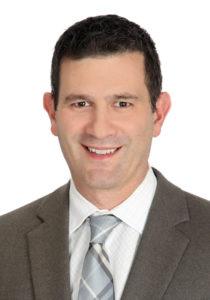
3 minute read
DOC TALK REVIEW
from March 2023 PULSE
by PTSMC
Dr. Cli ord G. Rios, MD Orthopedic Surgeon
Dr. Cli Rios, Orthopedic Surgeon at Orthopedic Assocaties of Hartford, presented on “Graft Choice in ACL Reconstruction” at PTSMC West Hartford on February 9th.

Click here to watch Dr. Rios’ Doc Talk
Review by Mike McGowan, Windsor Assistant Director
A breakthrough event for PTSMC was held on February 9, 2023 as we were able to host our rst in-person Doc Talk since pre-COVID times. Dr. Cli ord Rios, a well-renowned surgeon born and raised in the Hartford Area treating patients of all ages focused on treating the knee and shoulder, was able to share his expertise and knowledge with sta and clinicians regarding ACL Reconstruction Rehabilitation.
A few of the key takeaways from the talk were his discussions regarding grafts harvested for the reconstruction with the main distinction being between allograft versus autograft. Allografts are derived from donors and the most common locations these grafts are taken from include the Tibialis (anterior or posterior), Achilles, and Patellar tendons. Allografts are commonly used in the older population that may not be as active, have incurred some degree of trauma or multi-ligament involvement, or an overall inactive population - due to the graft’s 2-3x more likelihood of re-tear as compared to autograft. One bene t of allografts however, is that the surgery itself is quicker with an “easier” onset to the rehabilitation process.
Conversely, autografts, which are harvested from the patient themselves, are most commonly derived from patellar (bone patella bone), hamstring, and quadriceps tendon grafts. The bone patella bone (BTB) graft is most commonly chosen, especially in the younger, athletic population (as long as their growth plates have matured) as there is a fast incorporation of the xation of bone within the graft. Quadriceps tendon grafts were once used much more heavily (1979 the graft came to fruition) but had taken the back seat to hamstring and BTB grafts. However, with growing research and newer techniques coming about, including a horizontal incision just proximal to the knee joint, there is promise for this technique to begin to be more readily used. The quadriceps tendon graft also shows no limits with age/maturity of the patient, and less overall knee morbidity following the surgery. Dr. Rios brought to light one major reason why hamstring autografts aren’t used as much, especially with females athletes. Although it is considered the “second gold standard” to BTB, there are bene ts to the hamstring autograft including better extensor strength post-operatively and is considered a biomechanically stronger graft. However, grafting from the medial side of the posterior knee, if improperly rehabbed following surgery leaves the patient’s knee at increased risk to experience a valgus laxity due to the muscular/tendinous asymmetries left from the harvesting. Although this risk is still present, Dr. Rios does say that at times, aesthetics come in to play for young athletes. If the patient is persistent in wanting the hamstring autograft, that is the one of the primary reasons he will choose this graft over the others. However, clinically speaking, BTB graft is still Dr. Rios’ main option in which he is con dent with their high outcomes. Overall, careful consideration and use of clinical experience, as well as a discussion with the patient are ultimately used to choose which graft will be used.
With all of the positive progress made within ACL research, there are still some limiting realities that should be recognized within rehabilitation. As we consistently work with this patient population, it should be known that only 60-65% of athletes and patients return back to their pre-injury state. Additionally, an alarming 1 out of every 5 cases experience another ACL injury to either the ipsilateral or contralateral knee. And, 80% of patients show signs of post-traumatic osteoarthritis at 10 year follow-ups. These statistics should be seen as important to keep in the back of our minds, as educational pieces, but more-so, act as further driving forces to ensure our rehabilitation programs are comprehensive and establish appropriate guidelines for patients as they strive to return back to where they were prior to their injuries.
Lastly, Dr. Rios enjoys working together as a team through patient care and he is aware that we spend a majority of the time with patients comparative to himself. He urges us that if we have a question about their progress, mental perception of their situation, or concerns moving forward, he is always open for conversation.






